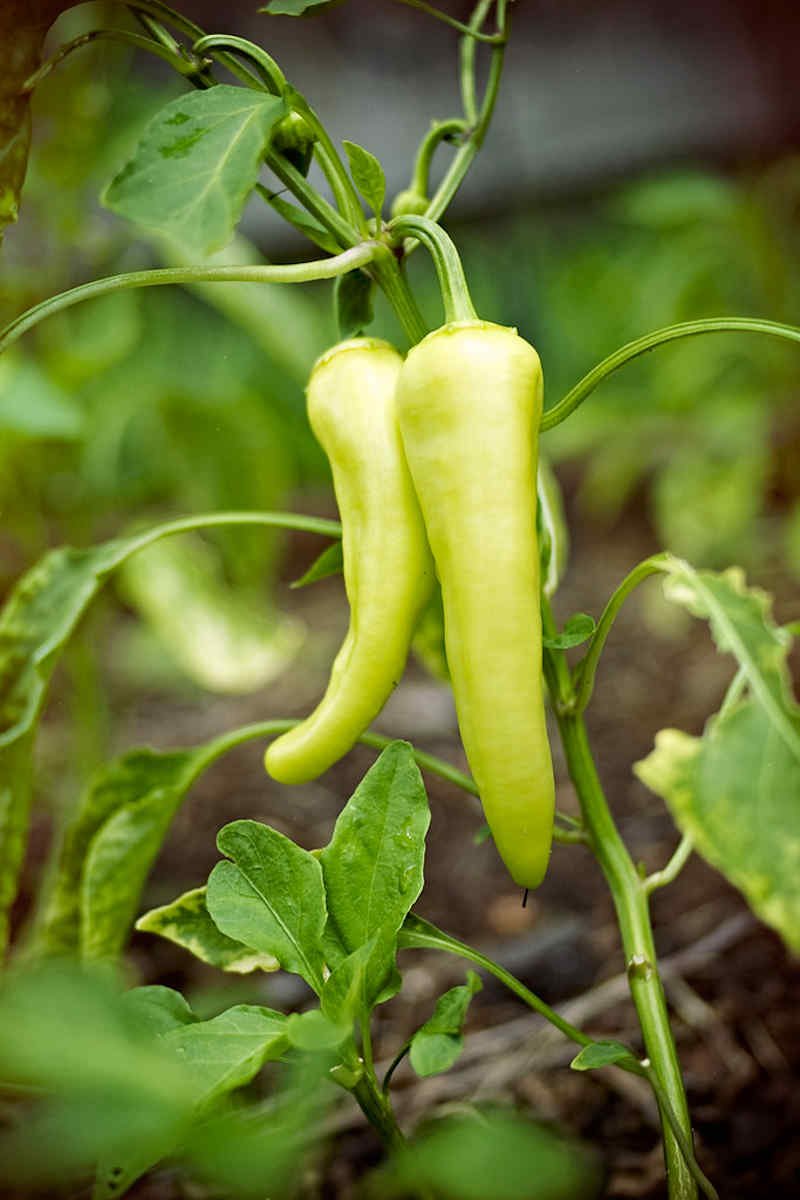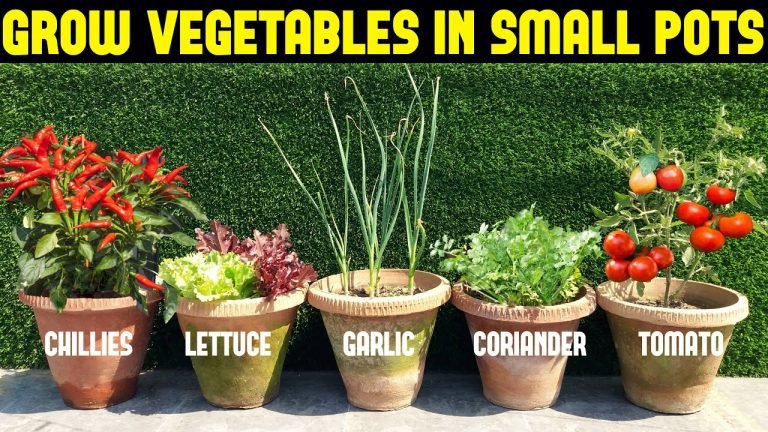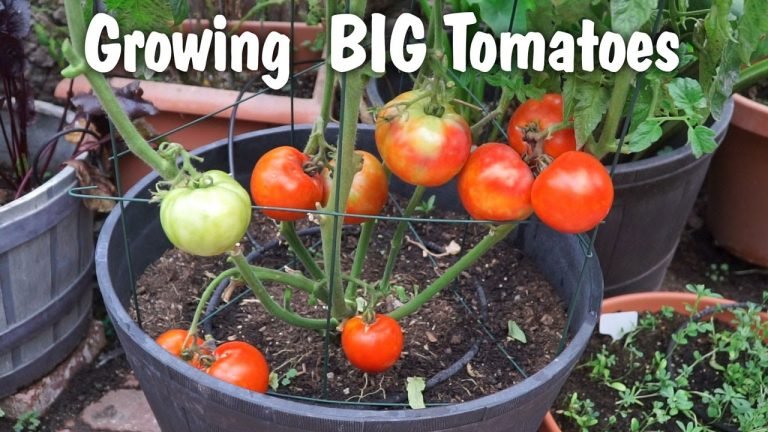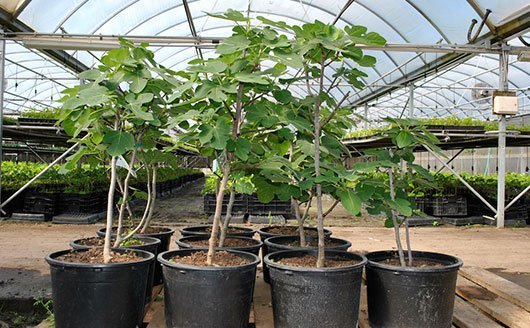how to grow banana peppers in a pot – [Beginners Guide]
Looking for a tasty and low-maintenance crop to grow in your home garden? Banana peppers might just be the perfect choice! Not only are they flavorful and nutritious, but they also grow exceptionally well in pots, making them a great option for gardeners with limited space or less-than-ideal growing conditions.
As someone who has grown banana peppers in pots for several seasons now, I can say with confidence that it’s a fantastic way to add some spice to your meals while enjoying the satisfaction of growing your own produce. Whether you’re a seasoned gardener or just starting out, growing banana peppers in pots is an easy and rewarding experience.
In this guide, we’ll cover everything you need to know to successfully grow banana peppers in pots, including selecting the right container, choosing the best potting soil, and providing the optimal growing conditions. We’ll also offer tips for caring for your plants and dealing with common issues like pests and diseases.
So, why wait? Grab a pot, some soil, and a few banana pepper seeds, and let’s get growing! By the end of this guide, you’ll be well on your way to harvesting your own delicious and spicy peppers right from your own backyard.
Pot or container selection
When it comes to growing banana peppers in a pot, the same principles apply as for cherry tomatoes. The right pot is crucial for the success of your plants, so here are some things to consider when selecting a pot for your banana peppers:
Size and capacity
Banana peppers also need plenty of room to grow, so it’s important to choose a pot that is large enough to accommodate your plants. A pot that is at least 12 inches (30 cm) in diameter and 12 inches (30 cm) deep is a good starting point. If you have the space, a larger pot is even better. This will give your plants plenty of room to spread their roots and grow to their full potential. Remember, the more soil your plants have, the more water and nutrients they can absorb, which leads to bigger and healthier plants.
Construction
The construction of your pot is also important for the health of your banana peppers. Here are some things to consider:
- Material: Choose a pot that is made of a durable material, such as ceramic, plastic, or fiberglass. These materials are lightweight, easy to move around, and won’t break down over time. Avoid pots made of metal or wood, as they can rust, rot, or leach chemicals into the soil.
- Drainage: Like cherry tomatoes, banana peppers also require well-draining soil. Make sure your pot has drainage holes in the bottom to allow excess water to drain out. If your pot doesn’t have drainage holes, you can drill some yourself or add a layer of rocks or gravel in the bottom to help with drainage.
- Style: You can choose a pot with a decorative design or a more utilitarian style, depending on your preference. Just be sure to choose a pot that is functional and well-suited for growing banana peppers.
By choosing the right size and construction for your pot, you can give your banana peppers the best chance at success. With proper care and attention, your plants will produce a bountiful harvest of delicious and spicy peppers that you can enjoy in your favorite dishes.
Make suitable soil mix
When it comes to growing banana peppers in a pot, the type of soil you use is just as important as the pot itself. The right soil composition can help your plants thrive and produce a bountiful harvest. Here are some things to consider when selecting soil for your banana peppers:
Type
It’s best to use a high-quality potting mix specifically formulated for peppers. These mixes are usually made from a combination of peat moss, perlite or vermiculite, and a mix of organic materials such as compost, coconut coir, and/or aged bark. The mix should be loose and well-draining, allowing for proper oxygenation and root development.
Avoid using garden soil or topsoil as they can be too heavy, compact easily, and may contain weed seeds or pathogens that can harm your banana pepper plants.
Mixture
Adding organic matter to your soil can improve its structure and provide the necessary nutrients for optimal growth. You can add compost, aged manure, or worm castings to your soil mix to improve its fertility and water retention.
In addition, banana peppers prefer a slightly acidic soil pH of around 6.0 to 6.5. You can test your soil pH with a simple kit and adjust it by adding lime to raise the pH or sulfur to lower it.
It’s important to note that the soil in your pot will lose nutrients over time, so it’s a good idea to supplement your soil with a slow-release fertilizer every few weeks or use a liquid fertilizer every other week during the growing season.
By choosing the right soil mix and amending it with the necessary nutrients, you can provide your banana pepper plants with the best possible growing environment and ensure a healthy and productive harvest.
How to plant the banana peppers?
Planting banana peppers in a pot at home is similar to planting cherry tomatoes. Here’s a step-by-step guide to help you get started:
Step 1: Choose the right pot
Select a pot that is large enough to accommodate the root system of your banana pepper plant. A pot with a diameter of at least 12 inches and a depth of at least 12 inches is a good size for most banana pepper varieties.
Make sure the pot has drainage holes to allow excess water to drain away from the roots. If the pot doesn’t have drainage holes, be sure to add some to the bottom before planting.
Step 2: Fill the pot with soil
Fill the pot with a high-quality potting mix formulated for peppers. Make sure to leave enough space at the top of the pot for watering and for adding a stake or cage if needed.
Step 3: Plant the banana pepper seedling
Remove the banana pepper seedling from its container, taking care to gently loosen the roots. Place the seedling in the center of the pot, making sure that the root ball is level with the soil surface.
Fill in around the root ball with soil, gently tamping it down to remove any air pockets. Water the seedling well to help settle the soil around the roots.
Step 4: Support the plant
Some banana pepper varieties may need support as they grow. If your plant is tall or if it produces heavy fruit, consider adding a stake or cage to the pot to help support the plant.
Be sure to place the stake or cage in the pot before the plant grows too large, as it can be difficult to add one later without damaging the roots.
Step 5: Water and fertilize
Keep the soil moist, but be careful not to overwater. A good rule of thumb is to water the soil deeply once or twice a week, depending on the weather and the size of the pot.
As the plant grows, you may want to fertilize it with a balanced fertilizer formulated for peppers to help it continue to thrive. Follow the instructions on the fertilizer package for the recommended amount and frequency.
With proper care and attention, your banana pepper plant will reward you with a bountiful harvest of delicious, homegrown peppers.
How to care for banana peppers?
Caring for Banana Peppers in a Pot at Home
Growing banana peppers in a pot at home is a fun and rewarding way to enjoy fresh peppers all season long. Here’s how to care for them to ensure optimal growth and fruit production.
Watering Requirements
Banana peppers require regular watering to thrive, but it’s important not to overwater them as this can lead to root rot. Check the soil moisture level by sticking your finger about an inch into the soil. If it feels dry at that depth, it’s time to water. Water deeply, but allow the soil to dry out slightly between waterings. In hot weather or if the pot is located in a particularly sunny or windy spot, you may need to water more frequently.
Fertilizer Requirements
Banana peppers benefit from regular fertilization to promote healthy growth and fruit production. Use a balanced fertilizer, such as a 10-10-10 formula, according to the package directions. Alternatively, you can use a slow-release fertilizer or compost to provide a steady supply of nutrients over time. Avoid overfertilizing, as this can lead to excessive foliage growth at the expense of fruit production.
Sunlight Needs
Banana peppers need plenty of sunlight to thrive, so choose a spot in your garden or patio that gets at least 6 hours of direct sunlight per day. If you don’t have a sunny spot outdoors, you can also grow banana peppers in a sunny window indoors using a grow light.
Pruning & Training
Pruning and training banana pepper plants can help improve air circulation, increase sun exposure, and make harvesting easier. To prune, simply remove any suckers (small shoots that grow from the base of the plant) and any yellow or diseased leaves. To train your banana pepper plants, use stakes or cages to support the plants as they grow. This will help prevent them from falling over and will make it easier to access the fruit.
Other Care
In addition to watering, fertilizing, and pruning, there are a few other things you can do to care for your banana pepper plants:
- Mulch the soil around the plants to help retain moisture and suppress weeds.
- Pinch off any flowers that appear early in the season. This will allow the plant to focus its energy on root growth and will lead to a more productive harvest later on.
- Be on the lookout for pests and diseases. Common problems include aphids, spider mites, and bacterial spot. If you notice any issues, take action immediately to prevent them from spreading.
With proper care, your banana pepper plants will produce a bountiful harvest of spicy, delicious peppers that you can use in a variety of recipes.
Common problems
Other Issues
In addition to the problems mentioned above, there are some other issues that banana peppers grown in pots may face, such as:
Lack of space: Cherry tomato plants can grow quite large and may outgrow their pots. This can lead to stunted growth and poor production. To prevent this, it’s important to choose a pot that is large enough for your plants to grow in, and to transplant them into larger pots as they grow.
Overcrowding: If you plant too many cherry tomato plants in a single pot, they may compete for nutrients and water, which can lead to poor production. To prevent overcrowding, make sure to give your plants enough space to grow, and consider planting them in separate pots if necessary.
Temperature fluctuations: Cherry tomato plants are sensitive to temperature fluctuations, and may experience poor production if they are exposed to extreme temperatures. To prevent this, try to keep your plants in a location that is protected from extreme heat or cold, and consider using a shade cloth or other protective covering during hot summer months.
Watering issues: Overwatering or underwatering can also be a problem for cherry tomatoes grown in pots. To prevent these issues, make sure to water your plants deeply and regularly, but don’t let the soil become waterlogged. Use a moisture meter or stick your finger about an inch into the soil to check for moisture before watering.
Nutrient deficiencies: Cherry tomato plants require a steady supply of nutrients to grow and produce fruit. If you notice yellowing leaves or poor growth, it may be a sign of nutrient deficiencies. To prevent this, fertilize your plants regularly with a balanced fertilizer, or use compost or other organic fertilizers to provide a steady supply of nutrients over time.
By being aware of these potential issues and taking steps to prevent them, you can help ensure that your banana pepper plants grown in pots thrive and produce a bountiful harvest.
Harvesting & storing homegrown banana peppers
Banana peppers can be harvested once they reach the desired size and color. Typically, they are ready to harvest when they are around 4-6 inches long and have turned a bright yellow color. However, some varieties may be a darker shade of yellow or orange when they are ripe, so it’s important to check the specific variety you are growing to know what to look for.
To harvest the banana peppers, use a sharp pair of scissors or pruning shears to cut them off the plant, leaving a small section of stem attached. Avoid pulling the peppers off the plant, as this can damage the plant and reduce future production.
After harvesting, you can store banana peppers in a variety of ways depending on how you plan to use them. Here are a few options:
Fresh: If you plan to use the peppers right away, simply store them in a cool, dry place until you are ready to use them. Avoid washing them until you are ready to use them, as this can cause them to spoil more quickly.
Refrigerate: If you need to store the peppers for a few days, you can refrigerate them in a plastic bag or airtight container. They should last for up to a week in the refrigerator.
Freeze: If you have a large harvest and want to store the peppers for an extended period of time, you can freeze them. To do this, wash and dry the peppers, then cut off the stem and slice them into rings or chop them into small pieces. Place the chopped peppers in a resealable plastic bag and store them in the freezer for up to 6 months.
Remember to check your banana pepper plants regularly and harvest any ripe peppers as soon as you see them. This will encourage the plant to continue producing more fruit throughout the growing season.
Growing banana peppers in container – Conclusion
Congratulations on learning about how to grow banana peppers in a pot! Growing your own banana peppers at home is a fun and rewarding experience that can provide you with fresh and flavorful peppers. By following the tips outlined in this guide, you can successfully plant and care for your banana pepper plants and avoid common problems such as pests and diseases.
Remember to choose a pot that is the right size, use a well-draining soil mix, and provide your plants with adequate sunlight and water. With a little bit of effort, you can enjoy a bountiful harvest of banana peppers.
So why not give it a try? Whether you’re an experienced gardener or a beginner, growing banana peppers in a pot is an easy and accessible way to bring fresh produce to your kitchen. We hope you found this guide helpful and wish you all the best in your gardening endeavors!







